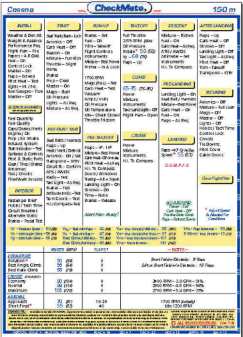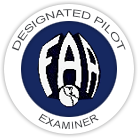It has been dropped, folded, tucked, tossed, and the worst...neglected. The checklist...it is an integral part of our pilot training from day one. As pilots, the checklist is a cornerstone in the overall safe operation of any flight. During your checkride, checklist usage is without question an item that will be evaluated by your examiner. Here's a quick overview of checklist usage, what should be expected on your checkride when using the checklist, and some thoughts on incorporating this practice in any flight you take.It has been dropped, folded, tucked, tossed, and the worst...neglected. The checklist...it is an integral part of our pilot training from day one. As pilots, the checklist is a proven cornerstone in the overall safe operation of any flight. During your checkride, checklist usage is without question an item that will be evaluated by your examiner. Here's a quick overview of checklist usage, what should be expected on your checkride when using the checklist, and some thoughts on incorporating this practice into any flight you take.
During your checkride, checklist usage is without question an item that will be evaluated by your examiner. Here's a quick overview of checklist usage, what should be expected on your checkride when using the checklist, and some thoughts on incorporating this practice in any flight you take.It has been dropped, folded, tucked, tossed, and the worst...neglected. The checklist...it is an integral part of our pilot training from day one. As pilots, the checklist is a proven cornerstone in the overall safe operation of any flight. During your checkride, checklist usage is without question an item that will be evaluated by your examiner. Here's a quick overview of checklist usage, what should be expected on your checkride when using the checklist, and some thoughts on incorporating this practice into any flight you take.
Many of you may already be thinking, "Of course, use the checklist...especially on your checkride". Believe it or not, I've seen all levels of checklist usage during the checkride. On a recent private pilot checkride, a young man and I were taxiing out for the first takeoff at the uncontrolled airport. We stopped in the run up area just short of the runway to go through the before takeoff checks. The applicant quickly ran through the tasks all pilots would associate with this checklist...flight controls, trim set, engine run up with mag and carburetor heat check. After bringing the engine to idle, he turned to me and said, "I'm all set...you ready?". Up to this point, no checklist had been used at all, and a few critical items had been left out of his quick pre-takeoff check. What were these items? A current altimeter setting (or set to field elevation), and the Heading Indicator aligned with the magnetic compass. With a deep breath, I told him that I was ready if he was ready. Without hesitation, we rolled out onto the runway and we were on our way. Needless to say, this pilot realized his errors and omissions just shortly after takeoff. He was then scrambling to make up for not using the checklist. The distractions kept him from flying the aircraft and outside responsibilities (retracting the flaps for the short field takeoff we just attempted and traffic avoidance).
One of the many benefits we love of flying is the freedom it provides us. Not just the freedom to get somewhere more quickly, but the overall freedom of flight. A close second to what we enjoy as pilots would be the structured environment flying provides. If a switch is on, it is on for a reason, for a purpose…and, wait for it...because the checklist said to turn it on. We try not to do random in aviation, specifically when it comes to procedures. A checklist provides the structure to flying. We all know how to shut down an airplane. Many of us have performed the shutdown process hundreds of times, but it is the checklist that we must consult each time to make sure we didn't forget something. However, I’ve finished many checkrides with the applicant after the “shut down” asking, “So, how’d I do?!”, and the master switch is still on. On a checkride, the examiner will be monitoring the use of the checklist throughout the flight. If checklist usage is not incorporated or neglected during the flight portion, it may result in a disapproval of the checkride. Use of the checklist is incorporated in the ACS for the practical tests, and has always been an emphasis item in the still used Practical Test Standards for some exams. We must uphold this structure not just during training, but also everyday flying by using the checklist.
If we incorporate the checklist from the beginning of the flight, we are able to eliminate threats and errors that can creep into normal activities as PIC. Any flight has outside threats such as weather, traffic avoidance, and ATC demands to name a few. By using the checklist, threats that lead to errors inside the cockpit are mitigated by maintaining a safe operating environment and thus, allowing more time on managing the outside threats to our flight. By doing this, the checkride or your next flight review will not be as challenging. So the next time you fly, make a point to use the checklist throughout the flight, and automatically increase your level of safety. You and your passengers deserve it!

